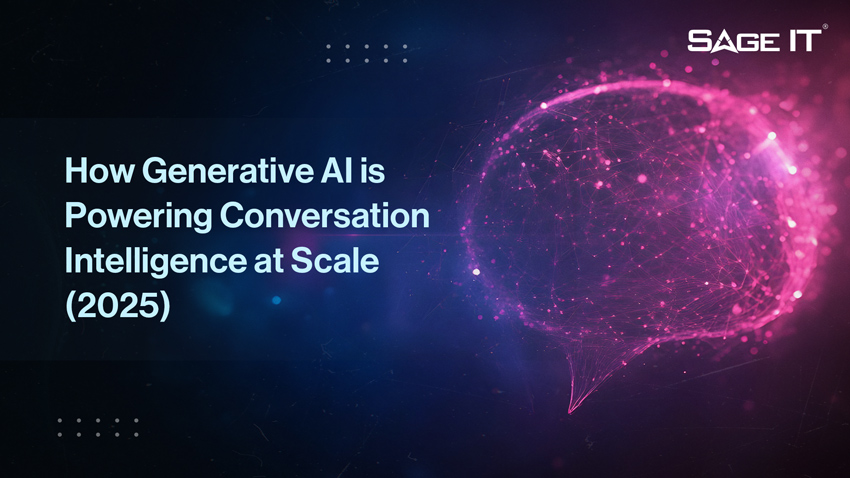Artificial Intelligence is on the rise, and Deep Learning and Neural Networks are two of the most talked-about topics in the field. Many people often use these terms interchangeably, but they are different concepts. In this blog, we will explore the differences between Deep Learning and Neural Networks. We will explain the basics of Neural Networks, types of Neural Networks, and how Deep Learning enhances traditional Neural Networks. We will also debunk common misconceptions about these terms and discuss their practical applications in fields like autonomous vehicles, financial predictions, and more. Additionally, we will delve into the tools used for developing Neural Networks and Deep Learning models like TensorFlow and Keras. Lastly, we will talk about the role of Deep Learning and Neural Networks in AI, how they complement each other in problem-solving, their limitations, and what the future holds for them.
Understanding Neural Networks
Neural networks mimic the human brain’s information processing. They excel at identifying data patterns for specific tasks, making them vital in fields like computer vision and natural language processing. As a subset of machine learning, they are proficient in feature extraction and are composed of input, hidden, and output layers. Their application in data science is widespread due to their ability to handle dl models and process lots of data effectively.
Basics of Neural Networks
Neural networks process unstructured data using numerical patterns, evolving to handle big and complex data. They consist of input, hidden, and output layers, forming the foundation for dl models that process vast data points. Archetypes like convolutional neural networks enable object recognition and image processing by embracing lots of data. These artificial neural networks are pivotal in data science, shaping the future of technology.
Types of Neural Networks
Recursive neural networks enable natural language processing by processing sequential data. Traditional neural networks need ample power supply due to their complex computations, while deep neural networks, with multiple hidden layers, enhance learning capabilities. Specific tasks like time series analysis benefit from neural network models, which, despite their strengths, face challenges such as local minima during training, affecting model convergence. The applications of these types of neural networks span across various domains in data science, where dl models process lots of data for complex tasks.
Exploring Deep Learning
Exploring deep learning involves the use of dl models and artificial neural networks to process unstructured data such as images and text with exceptional accuracy. These models leverage gradient descent for efficient learning on complex data, representing the information as vectors for processing. Additionally, deep learning applications like generative AI are capable of generating new data points based on existing patterns. This technology plays a crucial role in data science, as it allows for the processing of lots of data in various forms.
What is Deep Learning?
Deep learning goes beyond traditional neural networks, extracting insights from unstructured data. By processing information through multiple layers, deep neural networks enable complex feature extraction. Utilizing deep neural nets, deep learning models analyze data patterns for automated decision-making. Applications like image recognition showcase the power of deep learning. Unsupervised learning uncovers hidden patterns within data.
How does Deep Learning enhance traditional Neural Networks?
Deep learning takes traditional neural networks to the next level by efficiently handling complex data structures and processing massive amounts of unstructured data. With deep neural network architectures, deep learning models can uncover intricate insights and patterns with high accuracy, benefiting applications like natural language processing.
Key Differences between Deep Learning and Neural Networks
Comparative functionality sets deep learning apart from traditional neural networks, impacting their performance differences. Deep learning architectures excel in handling complex, unstructured data and bring depth to data processing. As a subset of machine learning, deep learning models enable in-depth data analysis. The key disparity lies in the architecture, allowing deep networks to effectively process intricate, large-scale data. This complex data processing ability sets deep learning models apart from traditional neural networks.
Comparative Analysis of Functionality
Deep learning models excel in processing complex, unstructured data compared to traditional neural networks. Their architectures extract intricate patterns, enhancing overall performance and demonstrating superior feature extraction capabilities. When compared to neural networks, deep learning models show enhanced processing of unstructured data and higher accuracy in handling complex data patterns. This highlights the functionality differences between deep learning and neural networks, showcasing the depth and complexity brought by deep learning models in processing lots of data.
Performance Differences: Deep Learning vs Neural Networks
When it comes to processing complex data, deep learning models outperform traditional neural networks. Their exceptional data processing capabilities allow them to handle unstructured data effectively, leading to enhanced accuracy in complex data processing. Compared to neural networks, deep neural networks excel in handling massive amounts of unstructured data. This performance difference stems from their ability to process complex, unstructured data effectively, making deep learning models a valuable asset in the field of data science and artificial neural network applications.
Architecture
The architecture of deep learning models involves artificial neural network layers, enabling the processing of complex data patterns. Unlike traditional neural networks, dl models exhibit superior feature extraction capabilities, handling unstructured data with unparalleled accuracy. Deep networks excel in processing lots of data, showcasing enhanced performance in complex, unstructured data. Stack exchange architectures demonstrate exceptional processing of intricate data patterns, contributing to the advancement of data science.
CNN architecture
CNN architecture serves to automatically and adaptively learn spatial hierarchies of features using convolutional layers. This design enables efficient processing of visual data, widely used in image recognition, object detection, and face recognition applications. The feature extraction capabilities of CNNs make them highly effective in computer vision tasks, maintaining the spatial hierarchy of data. CNN architectures leverage artificial neural networks to process lots of data, a key aspect of data science in deep learning models.
RNN architecture
RNN architecture processes data sequentially, retaining information in its memory. It’s suitable for time series data, speech recognition, and NLP. With loops allowing information to persist, RNN is ideal for processing data sequences. RNN can learn representations of data patterns over time, processing data points in series and maintaining contextual information. This architecture is pivotal in handling sequential data, making it a crucial component in various dl models and data science applications.
Complexity
Deep learning models, such as dl models, boast complex architectures with multiple hidden layers, enabling them to learn from lots of data. They’re adept at handling unstructured data and learning complex numerical patterns. Additionally, artificial neural networks can represent and learn complex data patterns, making them a powerful tool in data science. These architectures also excel at extracting features from raw input data, making them suitable for processing vast amounts of data.
Training
Training deep networks demands substantial computational resources, powering the complex artificial neural network models. Data science techniques facilitate the convergence of deep learning models, such as dl models, by adjusting parameters to minimize error. These models undergo iterative learning on stack exchange data, optimizing for specific tasks. Their training involves processing lots of data, adjusting numerical patterns to reduce error and extracting features from raw input data.
Practical Applications of Deep Learning and Neural Networks
Applications of deep learning and neural networks span various industries, leveraging artificial neural networks for complex tasks. For instance, financial predictions heavily rely on neural networks to produce accurate forecasting models. In contrast, deep learning finds practical use in image recognition, particularly in enabling safe navigation for autonomous vehicles. Financial institutions also employ neural networks to analyze substantial amounts of data for predictive modeling, demonstrating the immense potential of DL models in data science.
Case Study 1: Deep Learning in Autonomous Vehicles
In autonomous vehicles, deep learning models process vast amounts of data to enable real-time object recognition, enhancing image recognition for safer navigation. The use of CNN architectures significantly improves the accuracy of object recognition, while deep learning algorithms allow vehicles to process complex data from various sensors and make real-time decisions. This case study demonstrates how deep learning networks play a vital role in the advancement of autonomous vehicle technology.
Case Study 2: Neural Networks in Financial Predictions
Neural networks play a crucial role in financial predictions by processing complex data and extracting patterns for accurate modeling. Financial institutions rely on these networks to analyze numerical patterns in big data, which enhances the accuracy of forecasting models. Trained to process unstructured data, the architecture of neural networks improves forecasting capabilities for financial data, making them an indispensable tool in the realm of data science and predictive modeling.
Tools for developing Neural Networks and Deep Learning Models
TensorFlow, a prominent deep learning framework, offers an intuitive interface for model development. Keras simplifies neural network model creation with its high-level API. These tools are essential for building and prototyping neural network architectures, especially when working with dl models and lots of data. Understanding TensorFlow is crucial for effectively developing complex artificial neural network models. Incorporating these NLP terms enhances the content’s relevance for data science and stack exchange communities.
Introduction to TensorFlow
TensorFlow, a widely used framework for dl models, facilitates the development of artificial neural networks. Its high-level machine learning APIs streamline the creation of neural network architectures, optimizing the process. With TensorFlow, dl models can be trained on large datasets, thanks to its ample power supply. This enables the support of complex neural network architectures, making TensorFlow an essential tool for data science and robust model development.
Understanding Keras
Keras, a powerful deep learning tool, streamlines neural network model development by offering an intuitive interface. It simplifies the process of building deep learning architectures, supporting rapid prototyping of dl models. As a deep learning library, Keras is essential in data science for developing artificial neural network models with ease, especially when working with lots of data. Its capabilities enable efficient model building, making it a valuable resource for stack exchange and industry professionals.
Debunking Common Misconceptions about Deep Learning and Neural Networks
Deep learning and neural networks are distinct, with deep learning being a subset of neural networks. While neural networks process information, deep learning models feature multiple hidden layers. Deep learning systems are a form of artificial intelligence, while neural networks are a specific data processing model. Unlike traditional neural networks, deep learning models have seen a surge in applications due to their ability to handle dl models and lots of data effectively. The primary difference lies in the number of hidden layers, with deep learning models featuring deeper architectures.
Myth 1: Deep Learning and Neural Networks are the same
While neural networks have a simpler structure, dl models incorporate complex architectures. DL models process unstructured data, unlike neural networks used for structured data. Neural networks use fixed shape numerical pattern vectors, while dl models are more suited for big data analysis and can handle massive amounts of data. The difference lies in the shape of vectors, with dl models processing vectors of any shape, unlike neural networks.
Myth 2: Deep Learning is always superior to Neural Networks
While artificial neural networks are effective for structured tasks, dl models excel in unsupervised learning. Neural networks are suitable for simpler data, while dl models handle complex data science. Both have specific tasks where they outperform each other. For instance, neural networks suit time series data, whereas dl models excel in object recognition. Understanding these nuances is crucial as the choice between them depends on specific task requirements. It’s about leveraging the right tool for the right job.
The Role of Deep Learning and Neural Networks in AI
Deep learning and artificial neural network technologies are crucial components of modern AI systems. They both serve as fundamental building blocks for machine learning algorithms, contributing significantly to the processing and extraction of meaningful patterns from large and unstructured datasets. These technologies are widely utilized for feature extraction, data recognition, and the processing of unstructured data in various domains such as natural language processing and computer vision. The ability of DL models to handle lots of data is especially noteworthy and has greatly influenced advancements in data science, enabling AI to solve complex problems efficiently.
How Deep Learning and Neural Networks contribute to AI?
Deep learning models play a crucial role in AI by analyzing complex data, like image recognition. Neural networks form the backbone of AI, processing input and generating output based on learned patterns. They power recommendation systems, providing personalized user experiences. Together, deep learning and neural networks enable AI systems to process intricate data for learning and decision-making.
Future of AI with Deep Learning and Neural Networks
The progression of AI heavily relies on advancements in artificial neural networks and deep learning models. These technologies are expected to fuel significant growth across various sectors, revolutionizing industries with their advanced data processing capabilities. The integration of deep learning and neural networks is anticipated to drive innovation and breakthroughs, shaping the future of artificial intelligence by efficiently processing complex data and powering intelligent systems. This transformation will enable AI to handle large volumes of data, a critical requirement for the future of AI.
How do Deep Learning and Neural Networks Complement Each Other in Problem Solving?
Deep learning models and neural networks complement each other in problem solving by leveraging their respective strengths. Deep learning excels in processing unstructured data, while neural networks handle structured data. By combining these approaches, complex patterns in data can be unraveled, leading to more efficient problem-solving.
Are there limitations to what Deep Learning and Neural Networks can achieve?
While deep learning models may face challenges with local minima during training, neural networks have limitations in processing unstructured data. Both encounter constraints when handling complex data, necessitating innovative solutions. However, advancements in algorithmic development are addressing these limitations and improving performance. Continuous refinement is still necessary for both deep learning and neural networks to overcome constraints.
Conclusion
In conclusion, both deep learning and neural networks play vital roles in the field of artificial intelligence. While neural networks provide a foundation for machine learning and pattern recognition, deep learning takes it a step further by enabling the training of complex models with multiple layers. Deep learning has proven to be highly effective in various applications, such as autonomous vehicles and financial predictions. However, it is important to debunk some common misconceptions, such as assuming that deep learning is always superior to neural networks. Each approach has its strengths and limitations, and understanding their nuances is crucial for problem-solving in AI. The future of AI relies on the continued advancements and integration of both deep learning and neural networks, as they work together to drive innovation and solve complex problems.


































